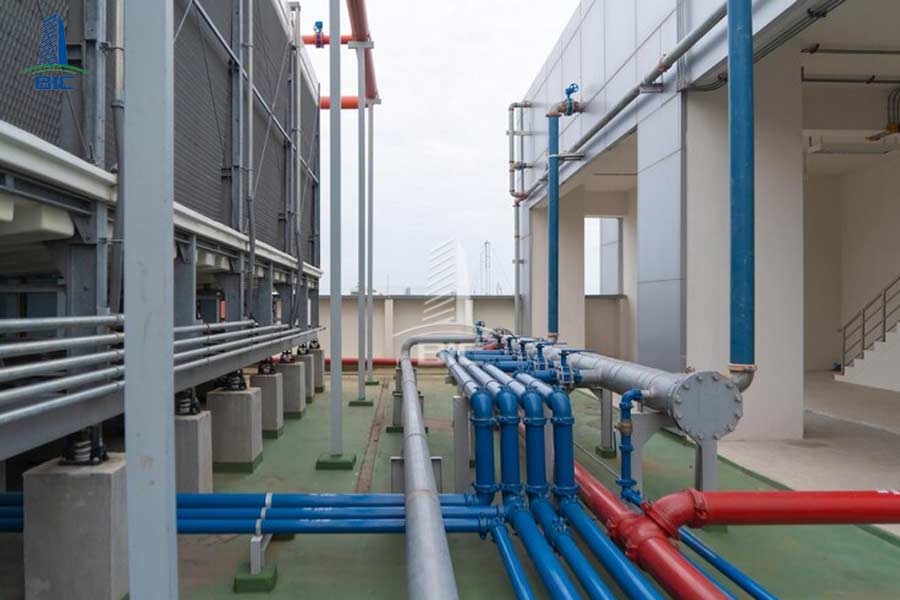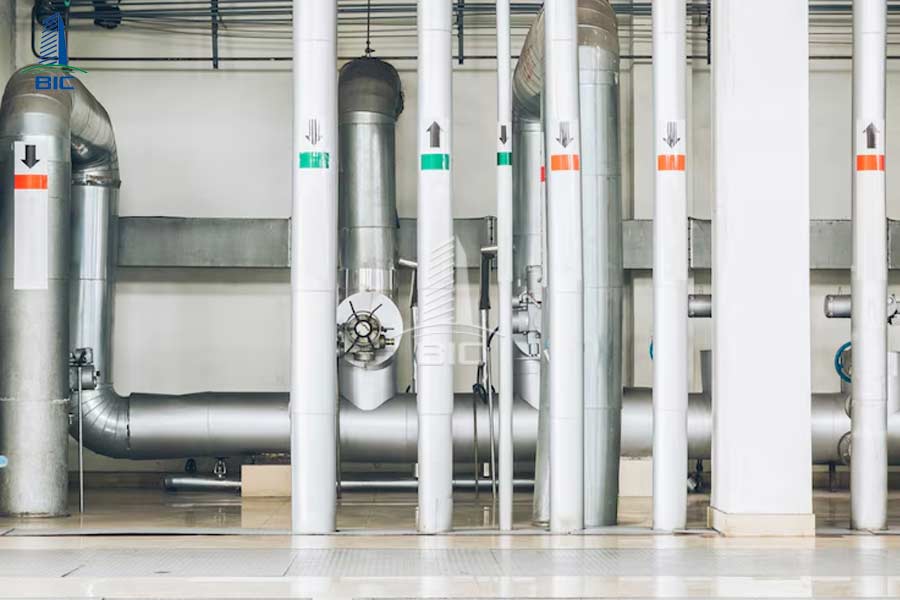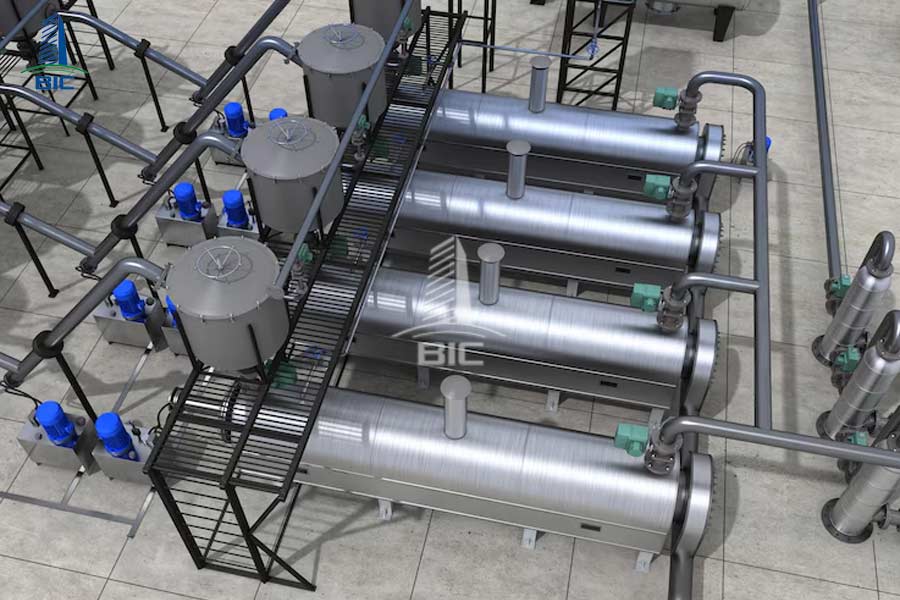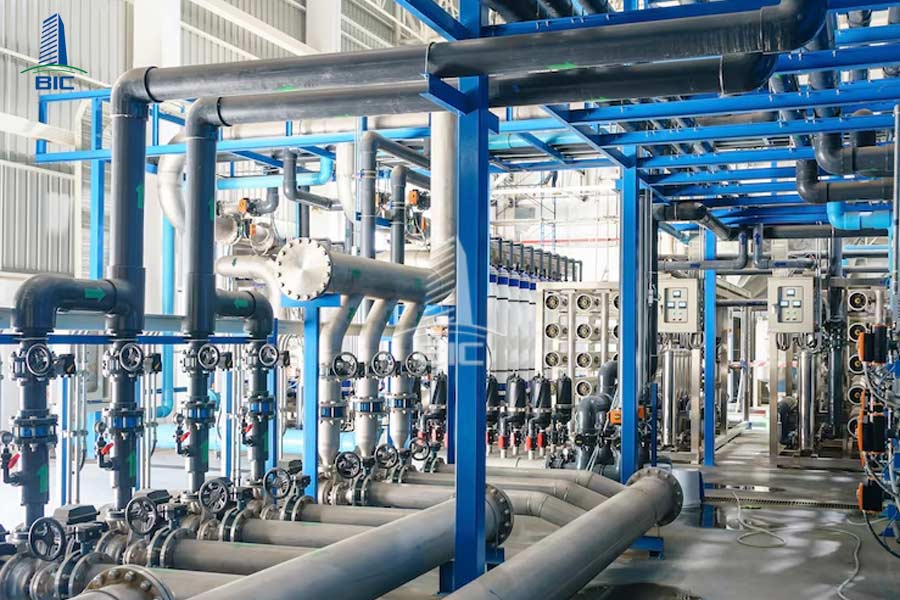
The water supply and drainage system is a mandatory component that must meet technical standards in the design of a food processing factory. It directly affects food hygiene and safety, operational efficiency, and compliance with international standards such as GMP, HACCP, and ISO 22000.
If the water system is not properly designed from the beginning, consequences may include: water stagnation, the growth of harmful microorganisms, cross-contamination in the production line, and failure to meet licensing and approval conditions.
Therefore, a deep understanding of the technical requirements for water supply and drainage systems is a prerequisite to ensuring the factory operates safely, meets standards, and remains sustainable. So what requirements must a food factory’s water system meet? Let BIC analyze this in detail below.
In a food production environment, water is not only a direct ingredient (washing materials, blending products...) but is also used indirectly to clean equipment, the factory, and personnel. If the water contains microorganisms, heavy metals, residual chlorine, or organic matter, it poses a high risk of contaminating the product — often undetectable to the naked eye.
Hence, the factory must use a water source that meets QCVN 01:2009/BYT standards, equivalent to potable water quality. Indicators such as E.Coli, coliforms, turbidity, ammonia, nitrites, chlorides, pH levels, etc., must stay within permissible limits. If well water is used, it must be filtered and disinfected with UV, ozone, or chlorination, and tested at least every six months. Water testing reports are mandatory in GMP, HACCP, and ISO 22000 audits.
Using the wrong piping materials can lead to severe consequences, yet it's often overlooked. To save costs, some investors use galvanized pipes, black iron, or ordinary PVC pipes, which lead to corrosion, flaking, microbial buildup, and leaching of toxic substances into the water over time.
In food environments, stainless steel pipes (304 or 316L) are the optimal choice for water lines entering processing areas because:
- They do not rust or leach metal ions.
- Their smooth surface resists sediment — reducing bacterial accumulation.
- They are highly durable and maintain structural integrity in hot and humid environments.
In living areas, handwashing zones, and cleaning systems, high-quality PPR or HDPE pipes may be used for cost efficiency without compromising safety.

Water pipe systems must be designed to:
- Be completely separated from drainage systems, with no overlaps or intersections to avoid backflow and contamination.
- Run above ceiling, inside walls, or mounted high — not near the ground — to facilitate maintenance and reduce contamination risks.
- Be clearly labeled (color codes, names) to differentiate between water used for processing, sanitation, and utilities.
At water supply points for workers, equipment, or processing tables, use touchless valves like foot pedals or sensor-activated taps to eliminate cross-contamination risks from hand contact.
Not all factory areas should share the same water source. Distinct water lines must be designated for different purposes to ensure quality control and prevent cross-contamination:
- Direct production water (washing, processing) must come from the cleanest source, go through fine filtration, use stainless steel piping, and maintain stable pressure.
- Personal hygiene water (hand washing, toilets) can be supplied from auxiliary systems but must not intersect with production zones.
- Technical equipment water (cooling systems, boilers) must be routed separately, filtered, and isolated from food contact.
- Firefighting water must have a dedicated line with booster pumps and safety valves per TCVN 3890:2009.
Without zoning, a single leak or backflow can contaminate the entire system — leading to potential mass product recalls.
The water supply system must be designed based on actual consumption analysis — not vague estimations. Each production stage (washing raw materials, rinsing tools, floor cleaning, or boiler operations) consumes specific water volumes at specific times.
Key infrastructure includes:
- Intermediate water tanks to maintain supply during external shortages or peak hours.
- Booster pumps with auto-sensors to stabilize pressure throughout the system.
- Flow and pressure meters at branch points to detect abnormalities in real-time.
A low-pressure water system can disrupt production, jeopardize hygiene — especially in bottle washing, sterilization, or CIP (Clean-In-Place) processes.
A qualified water supply system depends not only on its design but also on its operation and maintenance. Key checkpoints include:
- Sediment filters, activated carbon filters, UV or ozone final treatment units.
- TDS, pH, residual chlorine, and temperature meters at inlets to ensure water meets standards.
- A scheduled cleaning and maintenance plan for all pipes, valves, and tanks.
For export-oriented food plants, maintaining a logbook of water system inspections and traceability records is mandatory to meet client and auditor requirements.

While the water supply system nourishes the production line, the drainage system acts as a defensive shield against microorganism outbreaks, pests, and foul odors — top threats to food safety. In practice, 80% of contamination issues stem from wastewater, drains, and moisture points.
Therefore, drainage system design in food factories must adhere to three core principles: fast drainage, no stagnation, and no cross-contamination. Specifically:
Pumps must not be used to push wastewater against gravity because:
- They increase the risk of backflow during power outages or pump failures.
- They cause sediment buildup at bends.
All drains and piping must use a natural slope ≥1–2%, allowing water to flow by gravity to manholes or central treatment. Processing, floor washing, and sanitation areas must each have separate drain lines — no shared mainlines between high-risk zones.
Avoid bends and directional changes in piping to reduce clogs and microbial hotspots.
A common mistake is installing only fixed-point floor drains without continuous trench drains along walls or production lines, causing water to spill across the area — damaging equipment and creating moisture problems.
Standard solutions:
- Install recessed floor channels with a consistent slope to collection pits.
- Use perforated or slatted stainless steel covers for durability and easy cleaning.
- Drain inlets must have strainers and odor traps (P-trap or S-trap) to block odors and insects.
Trenches should run parallel to factory length or along wall bases — never allow wash water to pool under machinery or packaging areas.

Wastewater in food factories varies by origin. Classifying it early reduces treatment load and cross-contamination risks:
- Contains fats, organic solids, starches, proteins.
- Needs grease traps, sedimentation tanks before centralized treatment.
- Seafood or meat prep zones should have coarse inlet filters and separate collection tanks.
- From worker restrooms, changing rooms.
- Can be separated and treated like domestic wastewater.
- Often contains chemicals like NaOH, H₂O₂, citric acid.
- Must be neutralized for pH before entering the main system.
- May require intermediate tanks to control concentration and flow.
Goal: Treated wastewater must comply with QCVN 40:2011/BTNMT before discharge into the environment or industrial park infrastructure.
Microorganisms thrive in dark, humid, anaerobic spaces — ideal conditions found in drains and manholes. Without prevention measures, drainage systems can emit odors, attract fruit flies, and spread mold spores across the facility.
Key technical measures:
- One-way valves at drain branches connecting to centralized systems.
- Manholes must have water seals ≥50mm depth to block gases and insects.
- Sealed manhole covers with rubber gaskets and locks to prevent odor leakage.
- No drainage pipes, even small ones, should return to processing areas.
Drain systems must use corrosion-resistant, non-sediment, leak-proof materials:
- uPVC pipes are standard for main drains due to chemical and heat resistance.
- For high-spec or sterile zones, use stainless steel or HDPE.
- Pipe joints must be sealed with special adhesives or heat welding to prevent future leaks.
All piping networks must include access points, cleaning ports, or inspection hatches — essential for CIP operations.
A well-designed drainage system must also be continuously monitored and maintained:
- Clean trench drains, manholes, and pipes weekly or monthly depending on usage.
- Keep maintenance logs, odor status, and blockage reports for traceability.
- Use bioenzymes in processing zones to break down fats and organics, preventing buildup.
In export facilities, GMP or HACCP auditors and international clients may review these logs as proof of proactive hygiene control.

Water supply and drainage systems in food factories are not just technical necessities — they are legal conditions for licensing, inspection, exports, and production scale-ups. These systems must be designed in alignment with:
Mandatory for food, pharmaceutical, and supplement factories. GMP requires:
- Clear zoning between supply and drainage systems.
- No leaks or stagnation in production zones.
- Standard-compliant wastewater collection and treatment.
Violation can result in failed GMP certification, required renovations, or suspension.
Analyzes hazards and control points across the entire process. Water (supply and drainage) is considered a biological and chemical hazard, requiring tight control at:
- Water supply points for washing raw materials and equipment.
- Drain points where cross-contamination may occur.
A food safety management system integrating HACCP and ISO 9001. Requires:
- Prerequisite Programs (PRPs) for water systems.
- Records of regular inspection, pressure and flow monitoring, water quality audits.
- QCVN 01:2009/BYT: National standard for drinking water quality.
→ Applies to processing water systems.
- QCVN 40:2011/BTNMT: National standard for industrial wastewater.
→ Discharge water must meet this before being released.
- TCVN 4513:1988 & TCVN 7957:2008: Standards for water system design in industrial facilities.
→ Must be applied during technical design phase.
For export plants to the EU, Japan, USA... refer to:
- EU Food Hygiene Package
- FDA FSMA (USA)
- JFS-A/B (Japan)
These require stricter controls on food-contact materials, wastewater handling, and microbial prevention.
In food factory design, the water system is not a secondary support item, it is the foundation that protects the entire production line from microbial, chemical, and operational risks. A single design flaw could cost the business hundreds of millions in renovation or worse, lost export markets, revoked licenses, or product recalls.
A sustainable food factory is not built with concrete or machines but with technical thinking, compliance, and prevention from the very first detail like the water system. Contact BIC now for expert consultation in factory design construction!